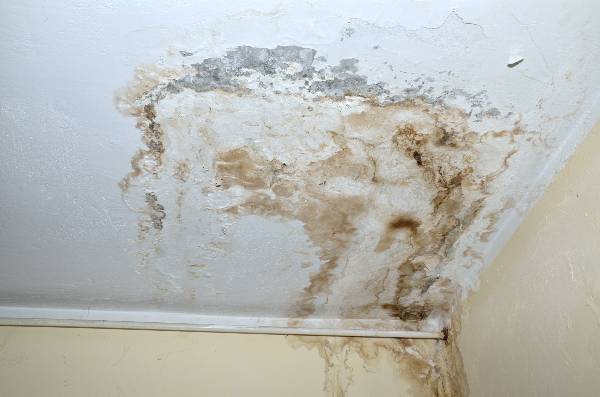Overview To Water Leakage Detection In Your Home
Overview To Water Leakage Detection In Your Home
Blog Article
Just how do you feel when it comes to Hacks to detect leaks?

Early discovery of dripping water lines can minimize a prospective calamity. Some tiny water leakages may not be visible.
1. Analyze the Water Meter
Every house has a water meter. Checking it is a proven way that helps you find leakages. For starters, turn off all the water sources. Guarantee no one will certainly purge, use the faucet, shower, run the cleaning device or dishwasher. From there, go to the meter and watch if it will alter. Considering that nobody is utilizing it, there ought to be no movements. If it moves, that suggests a fast-moving leakage. If you discover no adjustments, wait a hr or two and also check back once more. This implies you may have a slow leak that can also be underground.
2. Check Water Usage
Analyze your water costs as well as track your water usage. As the one paying it, you ought to notice if there are any kind of disparities. If you detect sudden changes, despite your intake coinciding, it indicates that you have leakages in your plumbing system. Keep in mind, your water costs ought to drop under the very same array monthly. An abrupt spike in your bill shows a fast-moving leak.
A stable rise every month, also with the same routines, reveals you have a slow leak that's likewise slowly intensifying. Call a plumber to completely inspect your building, especially if you feel a warm location on your flooring with piping underneath.
3. Do a Food Coloring Test
When it involves water usage, 30% comes from bathrooms. Examination to see if they are running correctly. Drop specks of food shade in the storage tank and also wait 10 minutes. If the color in some way infiltrates your dish during that time without flushing, there's a leakage in between the container as well as dish.
4. Asses Exterior Lines
Don't neglect to check your outdoor water lines also. Examination faucets by affixing a garden tube. Must water permeate out of the connection, you have a loosened rubber gasket. Replace this and also make sure all connections are tight. It will certainly help obtain it professionally analyzed and maintained every year if you have actually obtained a lawn sprinkler system. One small leakage can waste lots of water and also surge your water bill.
5. Check as well as Evaluate the Scenario
Home owners need to make it a habit to examine under the sink counters and also inside cabinets for any type of bad odor or mold and mildew growth. These 2 red flags suggest a leakage so prompt focus is called for. Doing routine inspections, even bi-annually, can conserve you from a major trouble.
If you recognize your home is already old, keep a watchful eye on your heating systems, pipes, pipelines and so on. Check for discolorations and damaging as most home appliances and pipelines have a life span. They will additionally naturally wear away as a result of tear and wear. Do not wait for it to intensify if you think leaking water lines in your plumbing system. Call a specialist plumber immediately so you do not wind up with a horrible mess in your house.
Early discovery of dripping water lines can reduce a possible calamity. Some tiny water leakages might not be visible. Inspecting it is a guaranteed way that helps you discover leakages. One small leakage can throw away lots of water as well as spike your water expense.
If you suspect leaking water lines in your plumbing system, do not wait for it to intensify.
WARNING SIGNS OF WATER LEAKAGE BEHIND THE WALL
PERSISTENT MUSTY ODORS
As water slowly drips from a leaky pipe inside the wall, flooring and sheetrock stay damp and develop an odor similar to wet cardboard. It generates a musty smell that can help you find hidden leaks.
MOLD IN UNUSUAL AREAS
Mold usually grows in wet areas like kitchens, baths and laundry rooms. If you spot the stuff on walls or baseboards in other rooms of the house, it’s a good indicator of undetected water leaks.
STAINS THAT GROW
When mold thrives around a leaky pipe, it sometimes takes hold on the inside surface of the affected wall. A growing stain on otherwise clean sheetrock is often your sign of a hidden plumbing problem.
PEELING OR BUBBLING WALLPAPER / PAINT
This clue is easy to miss in rooms that don’t get much use. When you see wallpaper separating along seams or paint bubbling or flaking off the wall, blame sheetrock that stays wet because of an undetected leak.
BUCKLED CEILINGS AND STAINED FLOORS
If ceilings or floors in bathrooms, kitchens or laundry areas develop structural problems, don’t rule out constant damp inside the walls. Wet sheetrock can affect adjacent framing, flooring and ceilings.
https://www.servicemasterbyzaba.com/blog/how-to-detect-water-leakage-in-walls/

I'm very interested in Hacks to detect leaks and I am praying you enjoyed the entire entry. Sharing is good. You won't know, you will be helping someone out. Thank you for taking the time to read it.
Report this page